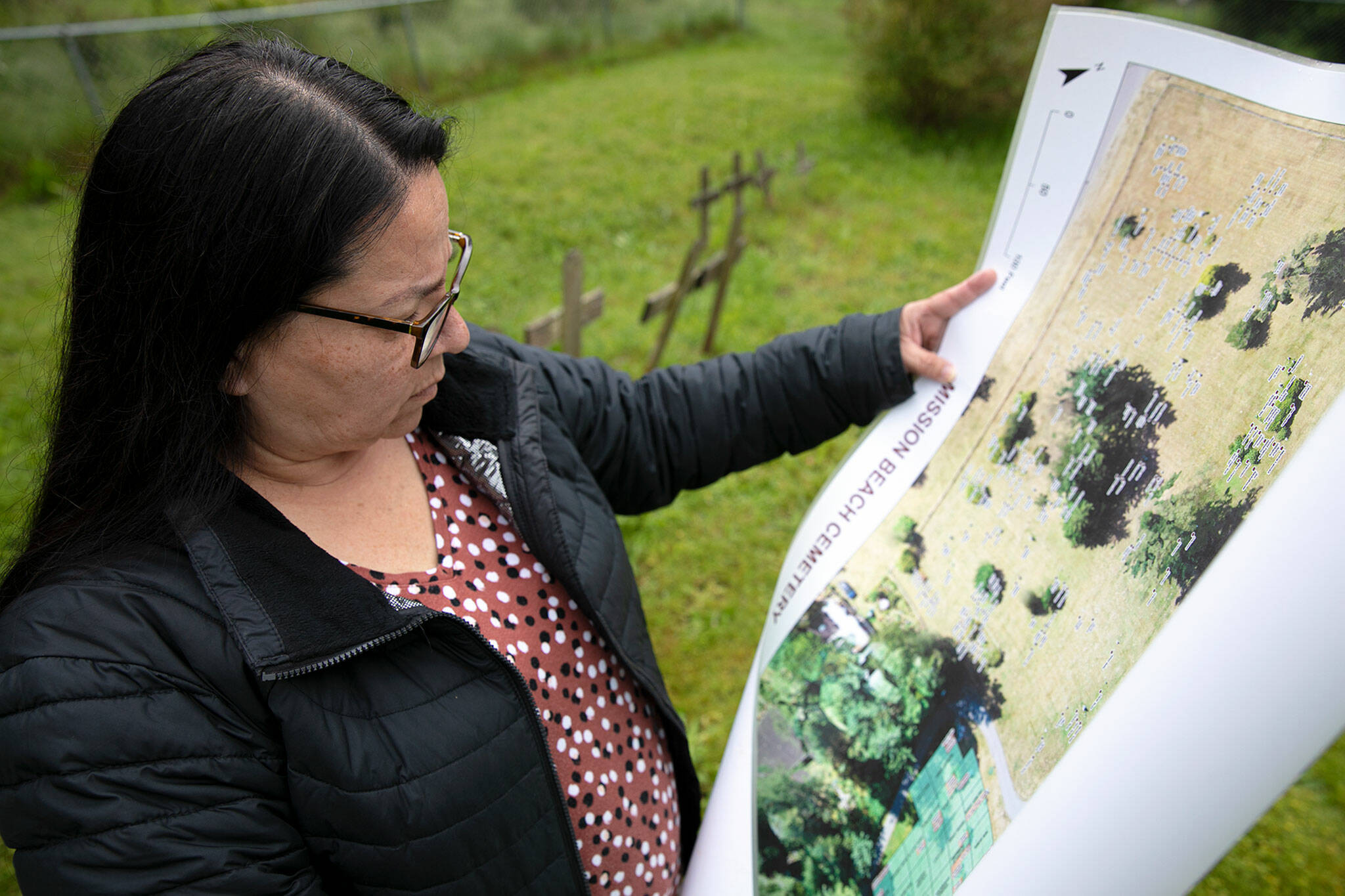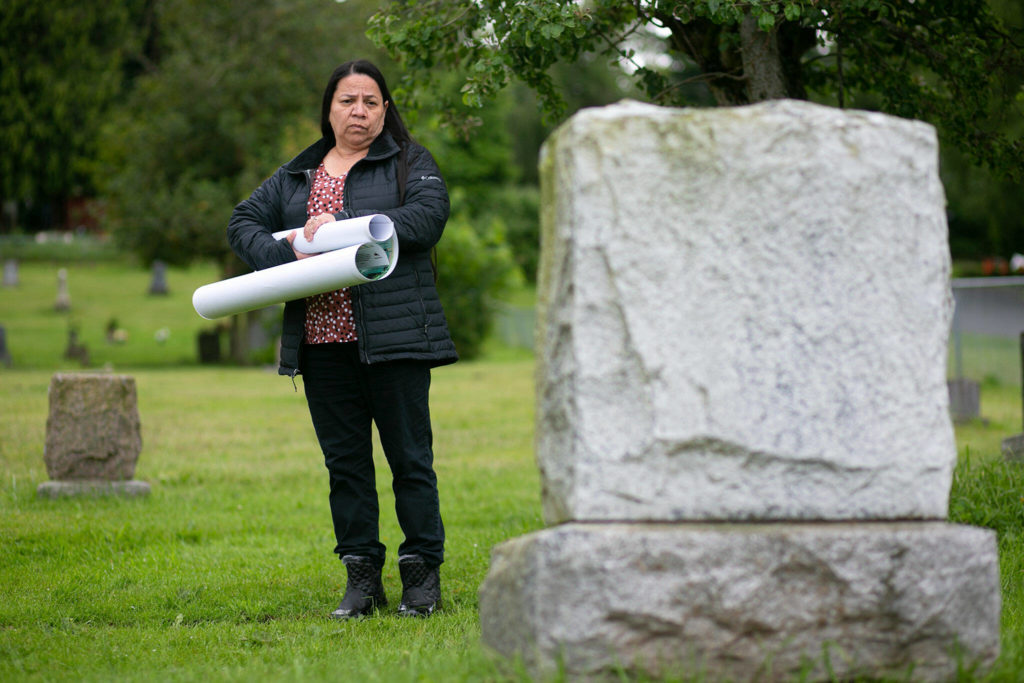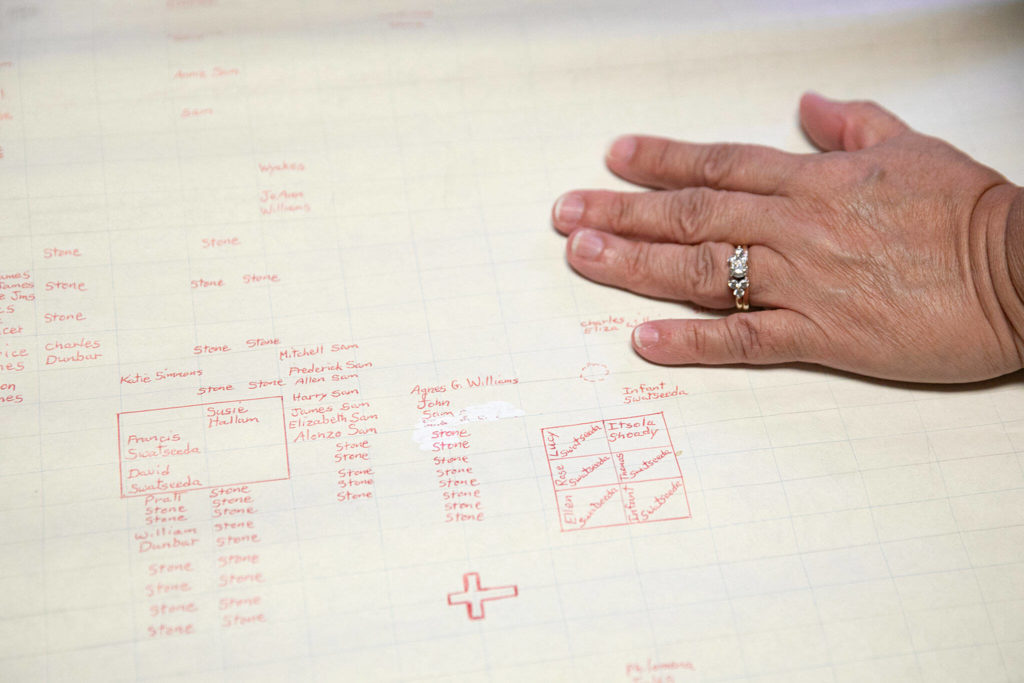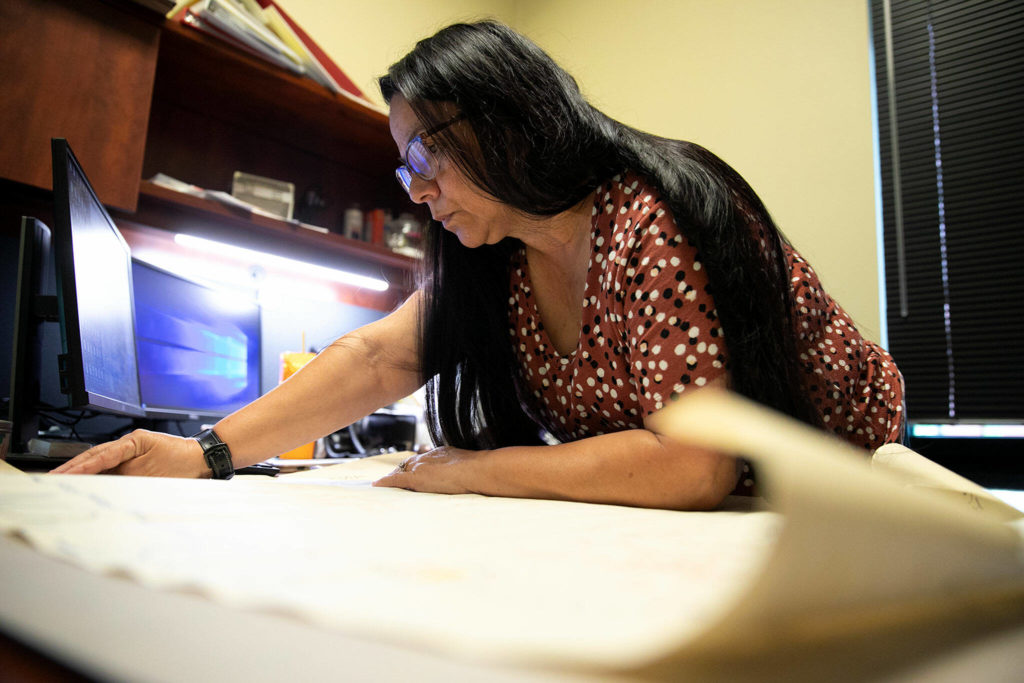TULALIP — One undated pale yellow scroll is spattered with names handwritten in red pen, charting the burial plots at Priest Point.
Candy Hill-Wells, funeral services officer for the Tulalip Tribes, unfurled a 4-foot-long laminated map of another cemetery at Mission Beach. She needed a second person to help her keep one end from dipping onto the dewy lawn. Each dot on this map represents a grave. Some appear to overlap. Most dots have a name attached. But the names stop at the eastern edge.
At least 30 school-age children are buried in the two cemeteries on Tulalip Bay, north of Everett. Of those, 17 appeared on school rosters at the federal Tulalip Indian School between 1904 and 1913. In the oldest part of the Mission Beach cemetery, another 31 graves are nameless and disorderly: They could be adults or children, or a mix of both. At Priest Point, stones mark about two dozen more graves of the unknown.
Hill-Wells knows little about either cemetery’s origins, or any ties to the Native American boarding schools that once stood near them.
“People just didn’t even talk about the school,” said Hill-Wells, whose grandmother attended but never spoke with her granddaughter about it.
The tribes began mapping graves at Mission Beach in 2008. The massive map shows dozens of neatly organized family plots.
In 2009, the tribes used GPS and old maps to begin piecing together a database of who’s buried in the Priest Point cemetery, too. It sits on a hill about 3 miles east of Mission Beach. The Tulalip Tribes are still filling in the blanks.
When she was hired in 2011, Hill-Wells inherited charts and records. She learned from elders and past cemetery staff. She relied on “this great big old book” that showed where people were buried. But it wasn’t exact.
“We’ve come a long way from that,” she said. “I can just type in a name and then it brings in the map area” of each grave at Mission Beach.
Hill-Wells doesn’t know who drew the old map at Priest Point, or when it was finished.
Across the country, many Native American boarding schools designated a cemetery for students, like the Chemawa Indian School near Salem, Oregon, or the Cushman Indian School in Tacoma.
In May, a U.S. Department of the Interior report tallied 53 cemeteries at current and former boarding school campuses, while noting “that there are many more burial sites that will be identified with further research.”
A walk through the Tulalip cemeteries reveals names of students buried here, as well as clues that there were likely more.
At Priest Point, dates on aging headstones mark deaths in the 1850s, around the time French priest Father Eugene Casimir Chirouse founded a mission at the new reservation. The Snohomish people did not have a cemetery here prior to his arrival. In researching his own family, Tulalip elder Les Parks learned Chirouse often had students buried just outside his mission school. The few existing records from the era are spotty and hard to read.
But it’s well documented that, in 1857, the priest built a school for Native American youth. That campus likely stood near the mouth of Quil Ceda Creek, off of what’s now 14th Avenue, Parks said. About a year later, the school moved to a lush hillside along Meridian Avenue. All that remains of the second campus is the Priest Point cemetery, Parks said.
The Mission Beach cemetery abuts what is believed to be the mission school’s third and final location. When it burned down in 1902, students moved to the new federal boarding school, run by the U.S. government off of today’s 76th Place NW.
Meanwhile, the graveyard at Mission Beach continued to grow. It’s still in use today.
Isabella Breda: 425-339-3192; isabella.breda@heraldnet.com; Twitter: @BredaIsabella.
Read the rest of this series, Tulalip’s Stolen Children.
Talk to us
> Give us your news tips.
> Send us a letter to the editor.
> More Herald contact information.





























